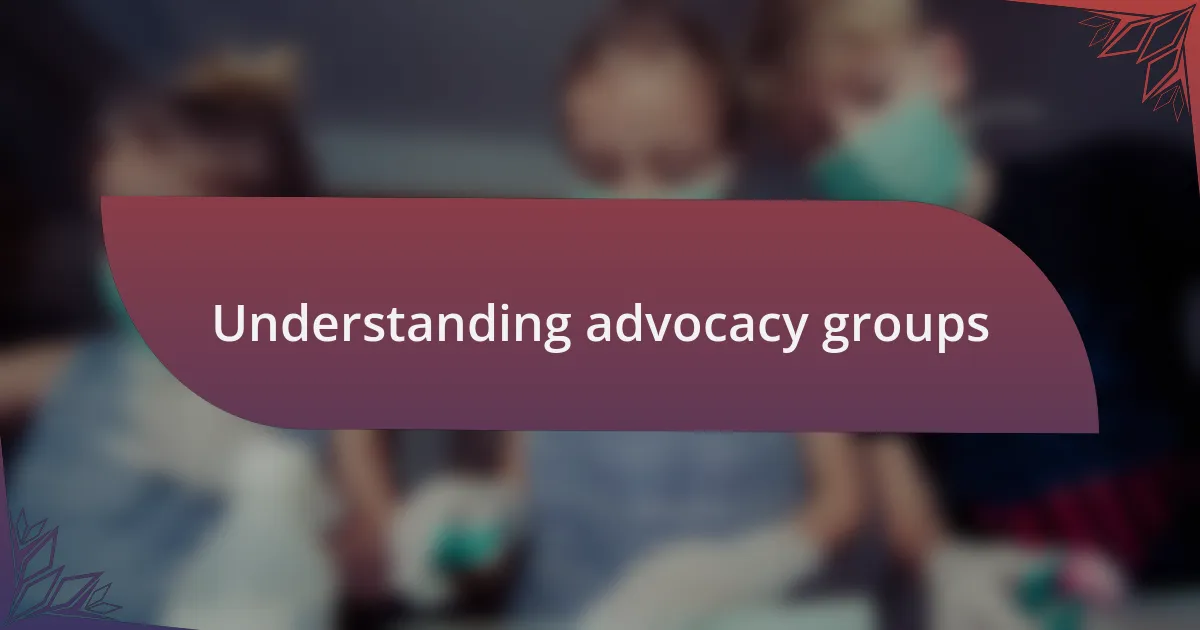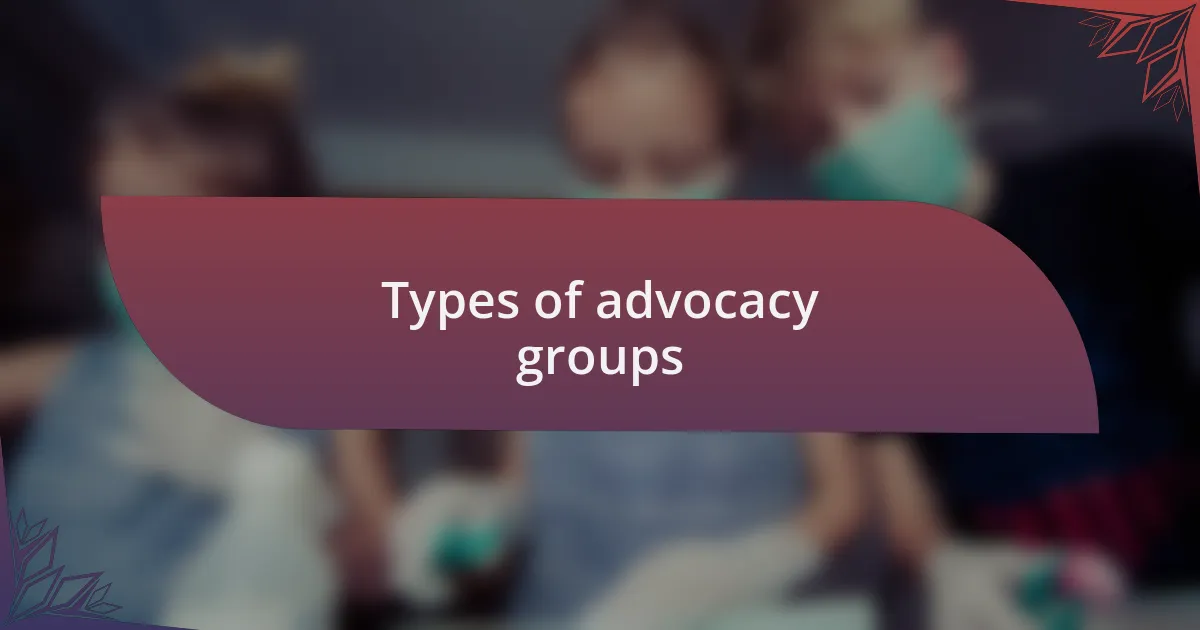Key takeaways:
- Advocacy groups play a crucial role in connecting communities with decision-makers and raising awareness on issues like health, environment, and social justice.
- Different types of advocacy groups (public health, environmental, and social justice) each address specific issues and unify individuals around common goals.
- Collaboration, persistence, and storytelling are vital lessons learned from involvement with advocacy groups, highlighting the power of collective action and personal narratives.

Understanding advocacy groups
Advocacy groups are organized entities that strive to influence public policy and raise awareness around specific issues, often focusing on health, environmental, and social justice. I remember the first time I attended a meeting with one such group; the collective energy and passion were palpable. Have you ever found yourself at an event where the shared purpose felt almost electric? That’s how advocacy groups make individuals feel included and empowered.
The role of these groups is pivotal in connecting the community with decision-makers, as they often act as intermediaries, translating complex issues into relatable narratives. For instance, during a campaign on mental health awareness, I witnessed firsthand how the personal stories shared moved not just the attendees but also the legislators we aimed to influence. Isn’t it incredible how a single story can change minds and drive change?
Moreover,, these organizations harness grassroots power, proving that even small voices can create a significant impact. I recall joining a rally where community members united for better healthcare access; it felt like every chant echoed our collective hope for change. Can you imagine being part of something so transformative? In these moments, I realized that advocacy isn’t just about the cause; it’s about building a community that champions each other’s rights and well-being.

Types of advocacy groups
Advocacy groups come in various forms, each serving unique purposes within the community. For example, public health advocacy groups focus specifically on health-related issues, striving to improve access to healthcare services and promote healthy living. One memorable moment for me was when I joined a local coalition advocating for a smoke-free policy in our parks. The camaraderie among group members, united by the same health goal, was inspiring. Have you ever felt that rush of determination when working alongside passionate individuals?
Another prominent type is environmental advocacy groups, which address pressing issues like climate change and conservation. I vividly recall volunteering with a group committed to protecting our local watershed. We organized clean-up events, but more than that, we educated community members about the importance of preserving natural resources. It made me realize how essential it is to connect issues like public health to environmental stewardship. Isn’t it interesting how these areas intersect and amplify each other’s impact?
Lastly, social justice advocacy groups tackle a range of human rights issues, from racial equality to rights. I once attended a rally organized by such a group, and the palpable energy in the air was unlike anything I’d experienced. It was a powerful reminder that advocacy is not just about raising a flag for causes; it’s about standing together to demand dignity and respect for all. How often do we reflect on the incredible strength that arises from collective voices striving for justice?

Lessons learned from advocacy groups
Engaging with advocacy groups has taught me the profound impact of collaboration. I remember my first meeting with a public health group where we brainstormed creative strategies to help underprivileged communities access health services. The synergy among us was palpable, and I learned that when diverse perspectives come together, the solutions we devise are not only innovative but far more effective. How often do we underestimate the power of collective problem-solving?
One significant lesson was the importance of persistence. During a campaign to raise awareness about mental health resources, setbacks felt disheartening. Yet, I discovered that every small victory—like a new partnership or successful event—built momentum. It reinforced the idea that advocacy is often a marathon, not a sprint. Have you ever experienced a time when patience transformed a challenging situation into a rewarding outcome?
Lastly, I realized that storytelling is a key tool in advocacy. I once shared my personal health journey during a community event, and the audience’s response was transformative. It reminded me that authentic stories resonate and create connections that statistics alone cannot achieve. Isn’t it fascinating how vulnerability can inspire action and foster a sense of community?